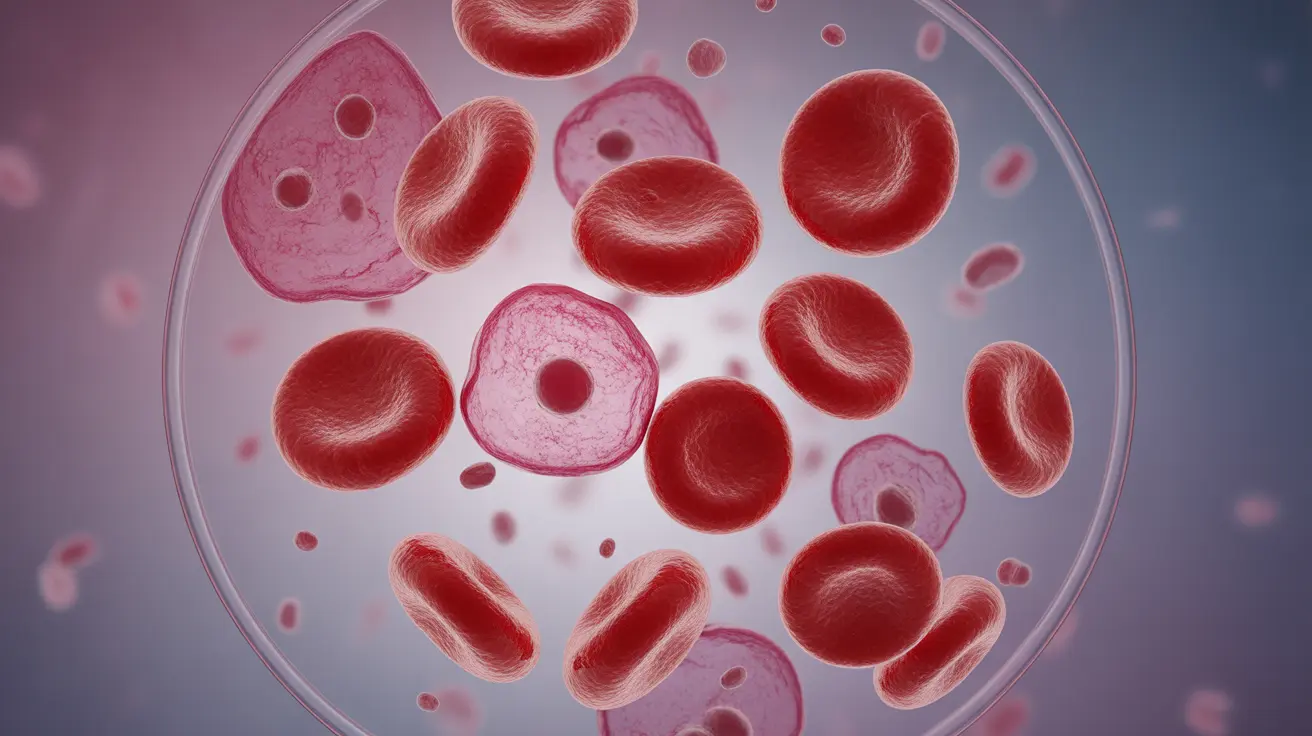A blood smear test is a crucial diagnostic tool that allows healthcare providers to examine the size, shape, and number of different blood cells under a microscope. This valuable examination can reveal important information about various blood disorders, infections, and other medical conditions that might not be detected through routine blood tests.
Understanding what a blood smear test involves and why it's performed can help patients feel more confident about this diagnostic procedure. Let's explore the details of this important medical test and what it can tell us about your health.
How Blood Smear Tests Work
During a blood smear test, a small drop of blood is spread thinly across a glass slide, creating a "smear." This sample is then stained with special dyes that help medical professionals distinguish between different types of blood cells and examine their characteristics in detail.
The examination involves looking at three main components of blood:
- Red blood cells (RBCs)
- White blood cells (WBCs)
- Platelets
Purpose and Medical Applications
Blood smear tests serve multiple diagnostic purposes and can help healthcare providers identify various conditions:
Blood Cell Disorders
The test can detect abnormalities in blood cells that might indicate:
- Anemia
- Leukemia
- Platelet disorders
- Sickle cell disease
- Thalassemia
Infection Detection
Blood smears are particularly useful in identifying certain infections:
- Malaria parasites
- Bacterial infections
- Various bloodborne parasites
The Testing Process
The blood smear testing process involves several steps:
Sample Collection
A healthcare professional will collect a small blood sample through a simple blood draw, typically from a vein in your arm. The procedure is quick and involves minimal discomfort.
Laboratory Analysis
In the laboratory, technicians will:
- Create the blood smear on a glass slide
- Apply special stains to highlight cellular components
- Examine the sample under a microscope
- Document any abnormalities found
Understanding Test Results
Results from a blood smear test can reveal various abnormalities in blood cells:
Red Blood Cell Analysis
Technicians evaluate RBCs for:
- Size and shape variations
- Color and concentration
- Presence of immature cells
- Unusual formations or inclusions
White Blood Cell Examination
The test assesses WBCs for:
- Cell count and distribution
- Presence of abnormal cells
- Signs of infection or inflammation
- Evidence of blood cancers
Frequently Asked Questions
What is a blood smear test and what conditions can it help diagnose?
A blood smear test is a diagnostic procedure where blood is examined under a microscope to evaluate blood cell characteristics. It can help diagnose conditions including anemia, leukemia, infections, and various blood disorders by revealing abnormalities in blood cell size, shape, and number.
How is a blood smear test performed and what should I expect during the procedure?
The test begins with a standard blood draw from your arm. A drop of blood is then spread on a glass slide, stained, and examined under a microscope. The procedure is quick and relatively painless, similar to any routine blood test.
What do abnormal results in a blood smear test mean for my red and white blood cells or platelets?
Abnormal results might indicate various conditions depending on the specific findings. Unusual red blood cell shapes could suggest anemia or genetic disorders, while abnormal white blood cell counts might indicate infection or leukemia. Platelet abnormalities could signal bleeding or clotting disorders.
When should a doctor order a blood smear test instead of or in addition to a complete blood count (CBC)?
Doctors typically order blood smear tests when CBC results are unusual or when they suspect specific conditions that require detailed cell examination. It's also commonly ordered when investigating unexplained symptoms or monitoring known blood disorders.
Can a blood smear test detect infections like malaria or inherited blood disorders like sickle cell anemia?
Yes, blood smear tests are particularly effective at detecting malaria parasites and can reveal the characteristic sickle-shaped cells in sickle cell anemia. They're valuable tools for diagnosing both infectious diseases and inherited blood disorders.




